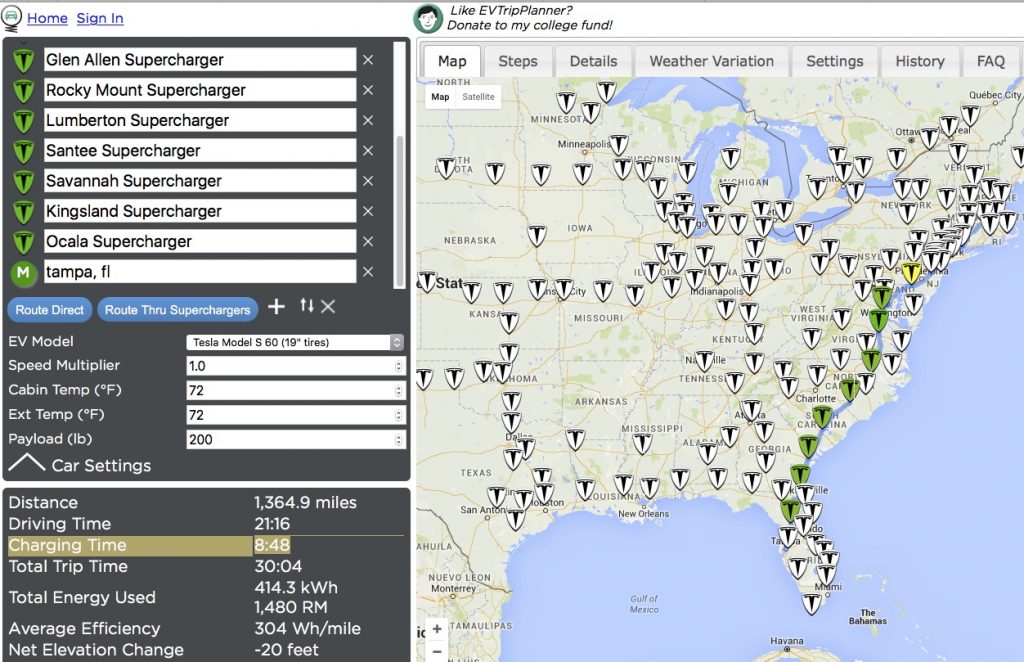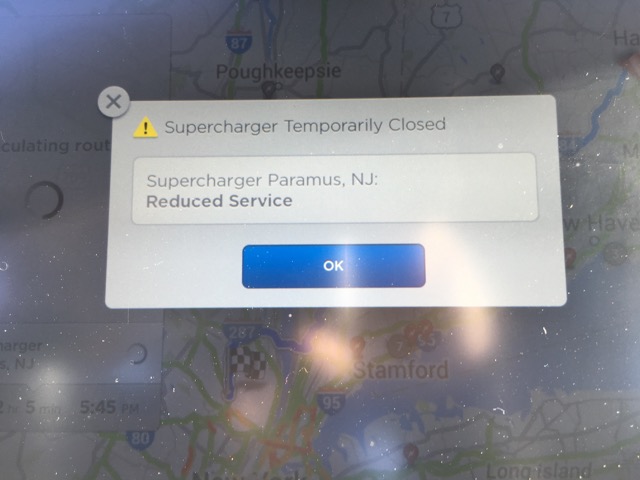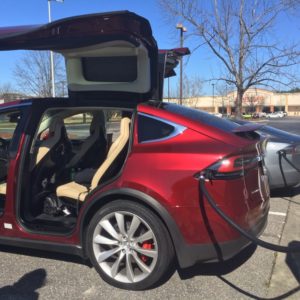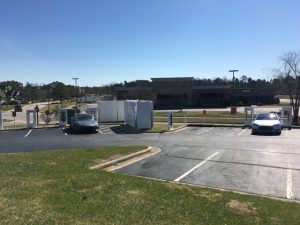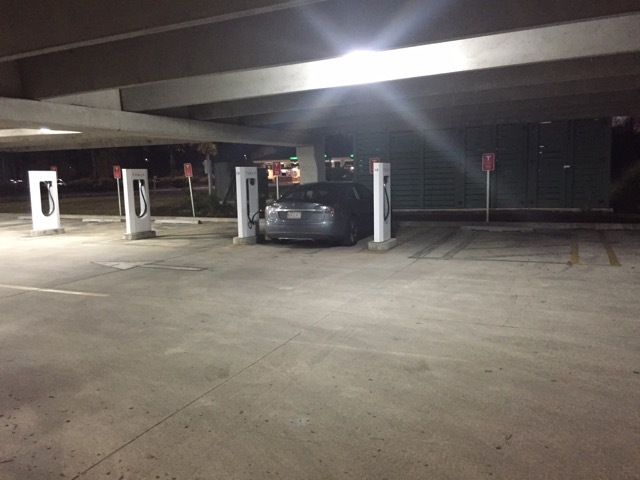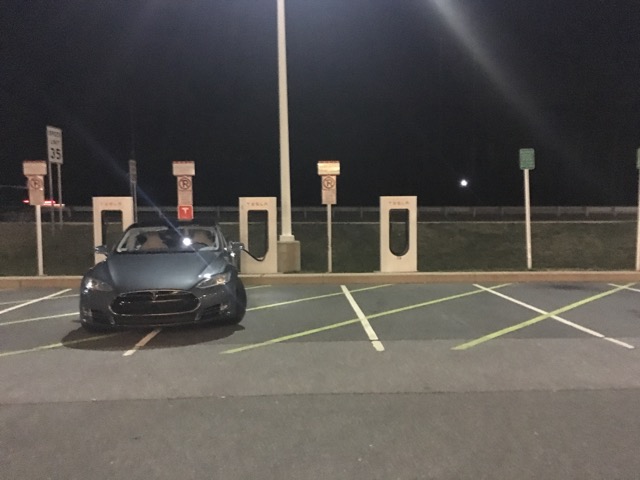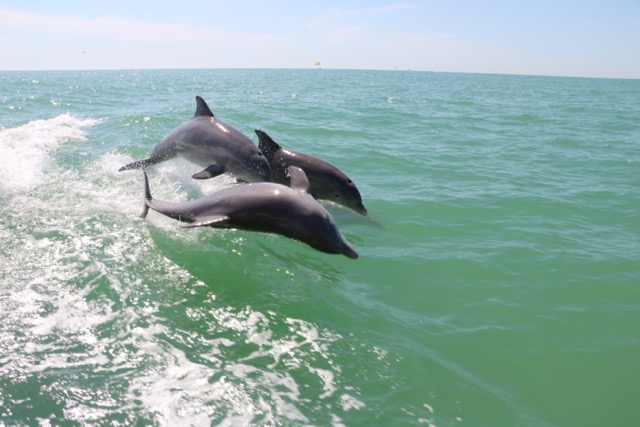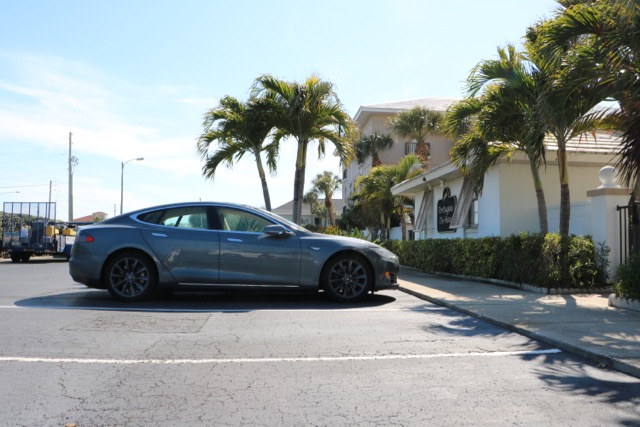
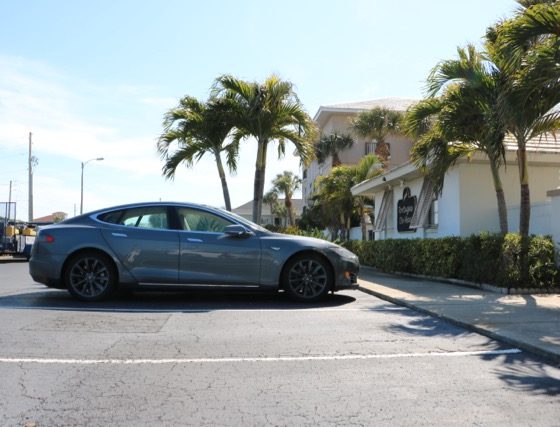
Lifestyle
5 lessons learned from a long-distance Tesla road trip
Having logged over 60,000 miles in the past two years with my Model S, I figured my upcoming journey from Boston to Tampa Bay, Florida would be a pretty routine run-of-the-mill Tesla road trip, but soon found out that I still had plenty more lessons to learn when it came to long distance travel.
Update/Note: I realized after I saw a number of comments to this post that I neglected to mention that I didn’t use Autopilot for any of this trip. My Model S, an April 2014 build, sadly doesn’t have the hardware or capability. The trip would have taken the same time with Autopilot but would likely have had some other kinds of experiences to share (good and bad i’m sure).
Trip Routing
Before embarking on my road trip, I mapped out my entire drive using Google directions which indicated that the drive from Boston, MA to Tampa, FL would take approximately 20 hours. Google factors in traffic and speed of travel, but doesn’t add any time to refuel, eat, etc. If you’re adventurous you can simply hop in your Tesla, input your destination address into the onboard Nav without much planning and begin driving. The Tesla navigation system will guide you to your destination while making use of Superchargers along the way. If you get tired you can always find a hotel, take a pit stop and then carry on the next day.
For many of us, this casual and unplanned approach to a lengthy trip isn’t always ideal. We want to know where we’ll be staying the night and know we’ll have a bed in a nice hotel that offers food at the time we’ll be arriving at. Doing the preparation while sitting in front of your Tesla navigation screen could be frustrating. And if you want to add a stop somewhere along the way, forget it, Tesla doesn’t support that.
Also, beware the onboard Tesla trip planner can be steadfast in its ways. For instance it flat out refused to route us through a convenient charger in Paramus, NJ because of a temporarily “Closed” Supercharger.
This had us quite concerned as we were already pretty committed to going in that direction. A quick call to the Tesla store at that charger site revealed that theres nothing wrong with the charger. Evidently the charging speeds are slow after 10pm due to some ongoing battle between Tesla and the local power company. As a result power at the Supercharger station is limited at night. But as long as we were visiting before 10pm we were clear to use the charger. This type of information needs to be conveyed to drivers.
Fortunately there’s a site that helps with some of the planning called EVTripPlanner. This site will help perform similar calculations on what charging stops are needed along the way and also allows you to add waypoints if you want to stop at specific locations outside of Tesla Superchargers. I used EVTripPlanner to plan my trip to Florida.
Calculating Driving Time
At the time I planned the trip, EVTripPlanner did not have the ability to track charging times. Though I knew that had to factor in the amount of time spent at each charger before computing my total drive time, I severely underestimated the amount of time needed for charging. EVTripPlanner has since added the feature to take into account charging times.
If you take a look at the app now for the same route, EVTripPlanner will tell you that charging will add and additional 8 hours and 48 minutes of charging through a combined 11 Supercharger stops along the way. Your 21 hour drive turns into a 30 hour drive. This backs into an increase of time spent by 43%.
When I did the math myself I used an average of 30 minutes per stop. The problem with that approach is somewhere along the way I did the math wrong and things didn’t add up right. Perhaps I missed a leg somewhere along the way. More on that later.
EVTripPlanner doesn’t currently provide an “elapsed time” or “time of day” readout and the data is difficult to retrieve especially if you plan on importing it into Excel or Google sheets.
Planning Mistake 1 – Cold Battery Pack
On the way down I couldn’t leave until 2pm, so we left and ultimately hit East Coast traffic for rush hour. This added time to the drive but fortunately doesn’t use extra range as EVs are even more efficient when moving slowly. Between the traffic and the expected charging stops we got to the hotel in Woodbridge, VA quite late. Rather than charging up for the next day that evening, we decided to hit the sack and charge up in the morning. This was a mistake.
It got down to about 40 degrees overnight and I had intentionally picked a hotel near a Supercharger. The next morning when we went to charge the charge was more than 30% slower than average. Reason being cold battery packs don’t charge as fast as warm battery packs, something I already knew but hadn’t considered late at night. We would have been better off charging the night before when our battery was warm. That or driving for a while before charging would have been good had we had enough charge to be able to do so.
Planning Mistake 2 – Charging Speeds
 While we know that most Tesla Superchargers can achieve 170 miles of range in 30 minutes, we found out the hard way that not all chargers can deliver this. Despite a warm pack and ideal charging conditions we found that some of the chargers are significantly slower than others. It’s still not as bad as trying to charge on a cold pack, but the end result is a 25% slower charging speed than the usual.
While we know that most Tesla Superchargers can achieve 170 miles of range in 30 minutes, we found out the hard way that not all chargers can deliver this. Despite a warm pack and ideal charging conditions we found that some of the chargers are significantly slower than others. It’s still not as bad as trying to charge on a cold pack, but the end result is a 25% slower charging speed than the usual.
Our average charge rate turned out to be 120 rated miles added to the batter pack in 30 minutes of charging time (240 rated miles added per hour) which is significantly lower than Tesla’s number.
Planning Mistake 3 – Round Trips
Our average Supercharger stop time was 34 minutes. While Tesla and EVTripPlanner recommended eleven Supercharger stops, we ended up making twelve stops. The reason for that was we didn’t have enough charge to arrive at our stay, cruise the town and get back to the Supercharger network on the leg to go back home.
As a result of that we pit stopped at one additional charger and charged enough to allow for comfortable driving around town and enough juice to get back to that Supercharger on the way home. This added time.
Planning Mistake 4 – Battery Buffer
 Tesla has been adjusting the onboard trip planner over time. In the early days it wasn’t possible to route via Superchargers and then they added it but it was very conservative and often buggy. They’ve continued to make updates to it (although slowly) and now it is a lot more aggressive. For most of my legs it was calculating routes that had me arriving at the next charger with a buffer of 11-12% remaining battery capacity — that’s about 32 miles of safety.
Tesla has been adjusting the onboard trip planner over time. In the early days it wasn’t possible to route via Superchargers and then they added it but it was very conservative and often buggy. They’ve continued to make updates to it (although slowly) and now it is a lot more aggressive. For most of my legs it was calculating routes that had me arriving at the next charger with a buffer of 11-12% remaining battery capacity — that’s about 32 miles of safety.
Teslas charge faster from a lower starting state of charge. Charging from 0 to 50 is a lot faster than charging from 20 to 70. So generally you want to arrive at the next charger with as low a state of charge and charge just enough to get to the next stop safely.
To keep things moving along and not lose time you need to watch your charge and hop back in the car as soon as the car says you’re safe to get to the next stop. Any more time and it’s un-optimal as a higher state of charge results in slower charging for your next charge.
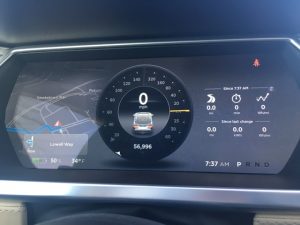
Single digit margins
Under ideal circumstances Tesla’s buffer would be fine since their computations take into account temperature and elevation changes. The problem is they don’t factor in wind or driving speeds.
I typically drive about 5mph over the speed limit. These days this classifies me as a “slower” driver but it’s what I’m comfortable with. In MA that means driving about 70mph on the highways but down towards Florida you’re doing 75 and still considered slow. After taking one of the recommended charging stops the Model S was predicting that we would arrive at our next stop with 12% charge remaining, but then it started to drop. 12% went to 11%, then 10%, then all the way down to 8%. There were no other chargers along the way and the estimated remaining charge continued to drop rapidly. I dropped my speed from 75 to 65 mph and arrived at the next charger with 9% remaining (24 rated miles). When all else fails, slow down.
From that point on, each time we charged and saw the vehicle telling us we would arrive at the next stop with 12% battery remaining, we waited to charge a few extra minutes just as added safety. It added time to our overall trip but at that point we were happy gaining that additional peace of mind.
Planning Mistake 5 – Calculate Twice, Drive Once
On the second day of driving we were making good progress, but as the day went on we realized that rather than getting to Tampa around midnight it would be more like 3am and we’re not the kind of drivers that like driving late at night. Fortunately a quick call back to my wife who was in front of a computer got us a hotel reservation and off the road before it got too late.
Somehow along the way the initial calculations were off by 3 hours. I suspect that I forgot to factor in one of the legs. Since there really isn’t a single system to help plan the entire trip, I was at the mercy of being human and making a mistake. I should have spent a bit more time double checking my planning before taking off.
Other Learnings
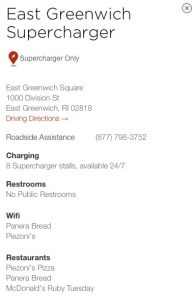 There’s a few other things I wanted to mention. First, as you drive from charger to charger on a long road trip a common question is “Whats at the next stop?” That question is still pretty painful to answer. You’d think you could just click on the charger icon and see the amenities, but it doesn’t. Apps like Teslarati’s own app (iOS | Android) aim to provide this type of info through crowd sourced data from other Tesla drivers, but even that requires several clicks and scrolling before you get to the information, plus you’re supposed to be driving. A simple page allowing easy access to nearby Supercharger details or next charger would be very helpful on a trip like this. Was there a Chick-fil-A at the next stop or just another terrible Texas Roadhouse? We had to know!
There’s a few other things I wanted to mention. First, as you drive from charger to charger on a long road trip a common question is “Whats at the next stop?” That question is still pretty painful to answer. You’d think you could just click on the charger icon and see the amenities, but it doesn’t. Apps like Teslarati’s own app (iOS | Android) aim to provide this type of info through crowd sourced data from other Tesla drivers, but even that requires several clicks and scrolling before you get to the information, plus you’re supposed to be driving. A simple page allowing easy access to nearby Supercharger details or next charger would be very helpful on a trip like this. Was there a Chick-fil-A at the next stop or just another terrible Texas Roadhouse? We had to know!
We also experienced a wide range of charger types. From the usual 8 in a row, back in variety, to those where you pull head in in an airport parking garage and have to get your parking ticket stamped.
There were also those those with poorly painted lines providing no clue on how you’re supposed to drive into the stall.
All this so I could introduce my Tesla to a palm tree for the first time.
And get in a few bike rides while New England tried to thaw out.
Summary
Before this trip I had dozens of Tesla road trips under my belt and have visited chargers in many states at all different times of the year. I was very familiar with the mechanics of an EV road trip, charging times and what to expect. My friend wanted to go to Florida around the same time and had never taken a road trip in an EV before. I warned him up front about the charging times and he assured me it was not a problem.
By the end of the trip he said he didn’t regret taking the trip, but next time he’d take an ICE car or fly — adding 40% to your travel time is unacceptable if you’re trying to get somewhere and not just touring the country. It was hard to argue with him.
While records have been set driving cross country in a Tesla, those are usually done with multiple drivers and with very little down time. That style of driving isn’t for everyone.
For myself, I still dream of driving across the country to California someday in my Tesla. I need to rest up first as the FL trip took away some of my desire to do that. Also I’m worried that once I get there I wouldn’t want to drive all the way back home :p
If you do plan to do a longer road trip, spend extra time in the planning phase. New tools and sites continue to be developed to simplify the process, but make sure you’ve had some experience with shorter trips first. With good planning and a relaxed approach you can still be jumping for joy at the end of a successful long road trip in your Tesla.

Lifestyle
Tesla Model S Plaid battles China’s 1500 hp monster Nurburgring monster, with surprising results
There is just something about Tesla’s tuning and refinement that makes raw specs seem not as game-changing.

The Tesla Model S Plaid has been around for some time. Today, it is no longer the world’s quickest four-door electric sedan, nor is it the most powerful. As per a recent video from motoring YouTube channel Carwow, however, it seems like the Model S Plaid is still more than a match for some of its newer and more powerful rivals.
The monster from China
The Xiaomi SU7 Ultra is nothing short of a monster. Just like the Model S Plaid, it features three motors. It also has 1,548 hp and 1,770 Nm of torque. It’s All Wheel Drive and weighs a hefty 2,360 kg. The vehicle, which costs just about the equivalent of £55,000, has been recorded setting an insane 7:04.957 at the Nurburgring, surpassing the previous record held by the Porsche Taycan Turbo GT.
For all intents and purposes, the Model S Plaid looked outgunned in Carwow’s test. The Model S Plaid is no slouch with its three motors that produce 1,020 hp and 1,420 Nm of torque. It’s also a bit lighter at 2,190 kg despite its larger size. However, as the Carwow host pointed out, the Model S Plaid holds a 7:25.231 record in the Nurburgring. Compared to the Xiaomi SU7 Ultra’s record, the Model S Plaid’s lap time is notably slower.
Real-world tests
As could be seen in Carwow’s drag races, however, Tesla’s tech wizardry with the Model S Plaid is still hard to beat. The two vehicles competed in nine races, and the older Model S Plaid actually beat its newer, more powerful counterpart from China several times. At one point in the race, the Xiaomi SU7 Ultra hit its power limit due to its battery’s temperature, but the Model S Plaid was still going strong.
The Model S Plaid was first teased five years ago, in September 2020 during Tesla’s Battery Day. Since then, cars like the Lucid Air Sapphire and the Xiaomi SU7 Ultra have been released, surpassing its specs. But just like the Model Y ended up being the better all-rounder compared to the BYD Sealion 7 and the MG IM6, there is just something about Tesla’s tuning and refinement that makes raw specs seem not as game-changing.
Check out Carwow’s Model S Plaid vs Xiaomi SU7 drag race video below.
Lifestyle
500-mile test proves why Tesla Model Y still humiliates rivals in Europe
On paper, the BYD Sealion 7 and MG IM6 promised standout capabilities against the Model Y.

BYD is seeing a lot of momentum in Europe, so much so that mainstream media has taken every opportunity to argue that the Chinese automaker has beaten Tesla in the region. But while BYD sales this year in Europe are rising and Tesla’s registrations remain challenged, the raw capabilities of vehicles like the Model Y are difficult to deny.
This was highlighted in a 500-mile challenge by What Car? magazine, which showed that the new Tesla Model Y is more efficient, cheaper to run, and more reliable than rivals like the BYD Sealion 7, and even the nearly 400 KW-charging MG IM6.
Range and charging promises
On paper, the BYD Sealion 7 and MG IM6 promised standout capabilities against the Model Y. The Sealion 7 had more estimated range and the IM6 promised significantly faster charging. When faced with real-world conditions, however, it was still the Model Y that proved superior.
During the 500-mile test, the BYD nearly failed to reach a charging stop, arriving with less range than its display projected, as noted in a CarUp report. MG fared better, but its charging speeds never reached its promised nearly-400 kW charging speed. Tesla’s Model Y, by comparison, managed energy calculations precisely and arrived at each stop without issue.
Tesla leads in areas that matter
Charging times from 25% to 80% showed that the MG was the fastest at 17 minutes, while Tesla and BYD were close at 28 and 29 minutes, respectively. Overall efficiency and cost told a different story, however. The Model Y consumed 19.4 kWh per 100 km, compared to 22.2 for MG and 23.9 for BYD. Over the full trip, Tesla’s charging costs totaled just £82 thanks to its supercharger network, far below BYD’s £130 and MG’s £119.
What Car? Magazine’s testers concluded that despite BYD’s rapid sales growth and the MG IM6’s seriously impressive charging speeds, Tesla remains the more compelling real-world choice. The Model Y just offers stability, efficiency, and a proven charging infrastructure through its Supercharging network. And as per the magazine’s hosts, the Model Y is even the cheapest car to own among the three that were tested.
Watch What Car? Magazine’s 500-mile test in the video below.
Lifestyle
Tesla Cybertruck slapped with world’s least intimidating ticket, and it’s pure cringe
One cannot help but cringe and feel second-hand embarrassment at the idea of a person just driving around with a stack of these babies.

A Cybertruck parked at Stanford Shopping Center in California was recently hit with what might be the most try-hard piece of paper ever slipped under a wiper blade: a “fake citation” accusing the driver of supporting a “fascist car.”
The note, shared on X by Tesla staff program manager Ryan Torres, quickly made the rounds on X, where it quickly gained attention as an example of how not to protest.
The world’s least intimidating ticket
According to the citation, the supposed “violation” was “driving a fascist car.” The remedial action? Take the bus, call an Uber, or ride a bike. The note also dubbed Elon Musk a “chainsaw-wielding Nazi billionaire.” Now, protests against Tesla and Elon Musk have become commonplace this year, but one cannot help but cringe and feel second-hand embarrassment at the idea of a person just driving around with a stack of fake anti-Tesla/Musk citations.
Torres pointed out the irony himself in his post on X. Tesla currently employs over 140,000 Americans, and SpaceX has put the U.S. firmly back at the top of space technology. As Torres put it, maybe the person behind the world’s least intimidating ticket should “read a book on innovation before vandalizing” other people’s property.
Peak performative clownery
Not to mention that the fake ticket’s logic collapses under its own weight. EVs like the Cybertruck are literally designed to reduce emissions, not “destroy the economy.” If anything, Tesla has bolstered the United States’ economy by fueling jobs in engineering, manufacturing, and clean energy. It’s not the first time a Tesla has been the target of vandalism or politically charged notes, but this one stands out for sheer cringe value.
Torres summed it up neatly: “Peak clownery.” On that point, at least, the citation earns full marks. In a way, though, perhaps cringe fake tickets are not as bad as the literal firebombs that were being thrown at Tesla stores and cars earlier this year because some critics were gleefully misinformed about Elon Musk.
